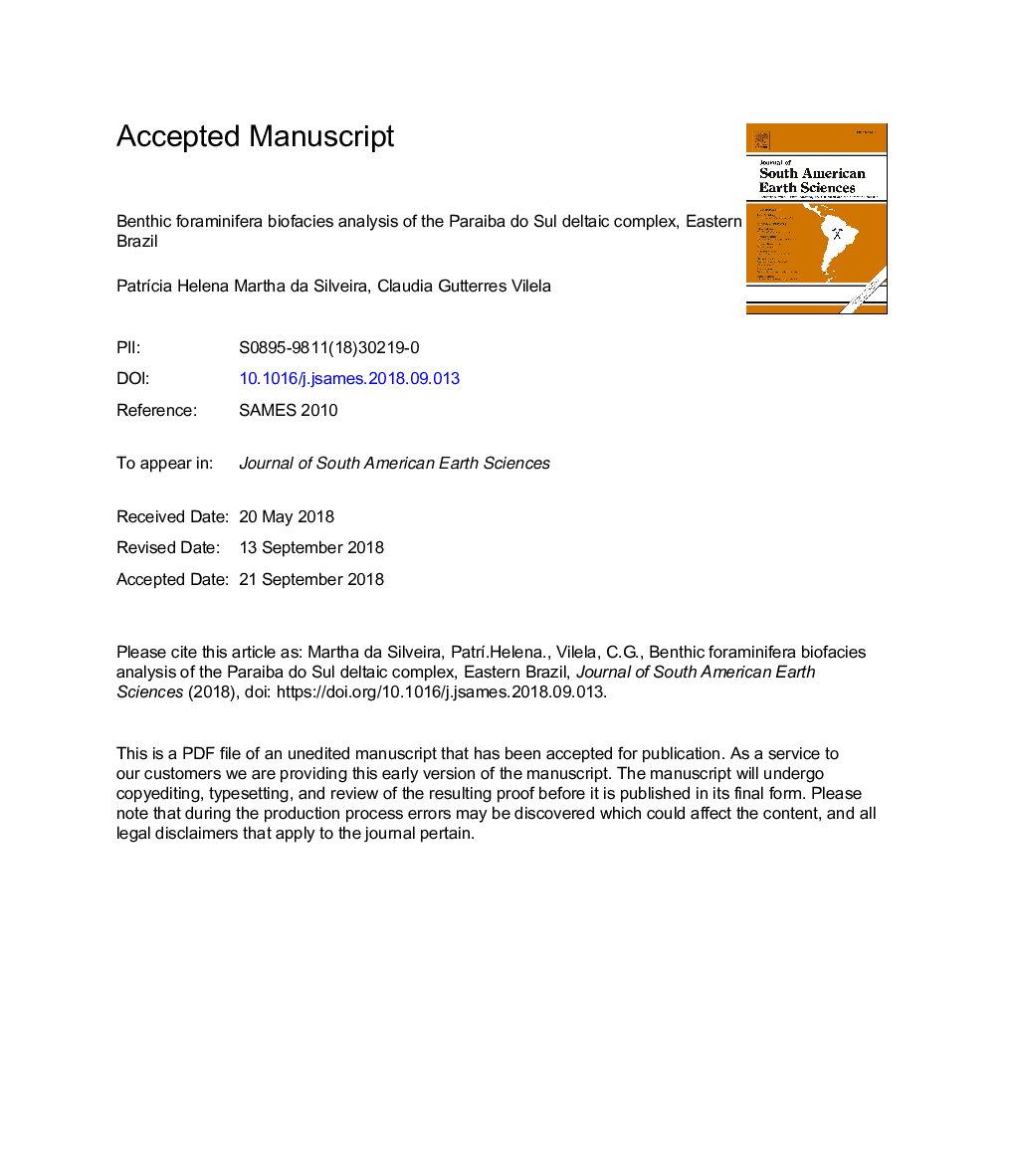| Article ID | Journal | Published Year | Pages | File Type |
|---|---|---|---|---|
| 11033125 | Journal of South American Earth Sciences | 2018 | 25 Pages |
Abstract
Foraminifera have a wide spatial-temporal distribution, from coastal to deep marine environments, and are good environmental and paleoenvironmental indicators. The determination of assemblages and indicator species has characterized the level of marine and continental influence, as well as enabling events such as marine ingressions and sea level rise and decrease during Late Pleistocene - Holocene, to be inferred. This work aims to characterize the biofacies based on benthic foraminifera preserved in sediments of the 2-BG-1-RJ well core drilled in the Rio Paraiba do Sul Deltaic Complex, at the south of the current river mouth, located in the municipality of Campos dos Goytacazes (RJ). The analyzed samples are located at the top of the well core, ranging from 40.50â¯m to 10.50â¯m, and were chosen because that core interval was described as a succession of Estuary (PGHâ²)/Marine facies (QP'). Two biofacies were defined, respectively: QPâ² characterized by shelf miliolids and PGHâ², characterized by Pararotalia cananeiaensis, Gavelinopsis praegeri, Haynesina germanica and Hanzawaia nitidula. Those species suggest estuarine environment with fluvial influence in the base and marine influence from the middle to the top of the core. Correlating the results of the biofacies with the sedimentary facies, two falling and one rising relative sea level are inferred. These results contributed to the understanding of the estuarine complex dynamics, which is influenced both by the oscillation of the sea level and fluvial influence.
Keywords
Related Topics
Physical Sciences and Engineering
Earth and Planetary Sciences
Earth and Planetary Sciences (General)
Authors
PatrÃcia Helena Martha da Silveira, Claudia Gutterres Vilela,
